Measurements with analog video camera WAT-120N
| Frameless version of this page |
Pages of the EXTA project
Page #1 - Main page with EXTA description
Page #2 - Measurements with analog video camera modul SK1004XC
Page #3 - Measurements with analog video camera WAT-902H2 Ultimate
Page #4 - Measurements with integrating analog video camera WAT-120N (this page)
Mode OFF Mode 1 Mode 2 Mode 4 Mode 8 Mode 16 Mode 32 Mode 64 Mode 128 Mode 256
Page #5 - Measurements with Astro CCD camera Atik 314L+
Page #6 - Measurements with IOTA-VTI device
Page #7 - Measurements with integrating analog video camera MINTRON 12V1C-EX
EXTA measurement setup for analog video camera WAT-120N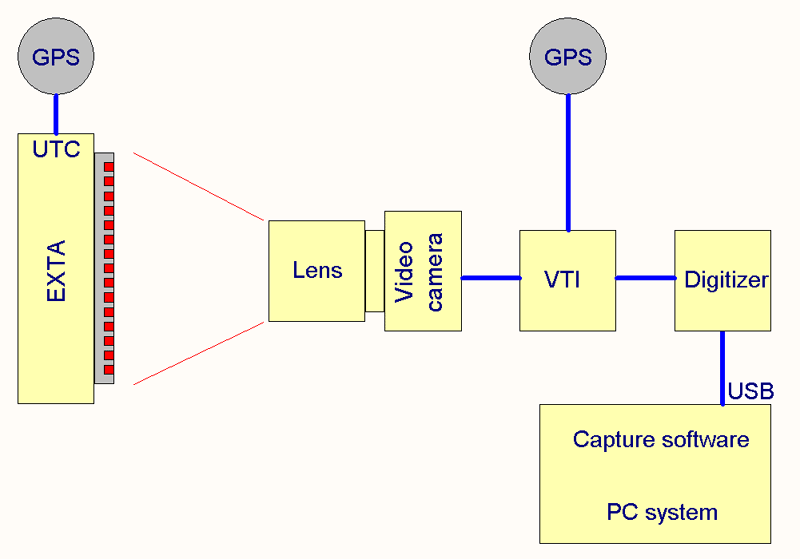
The source for the time stamps in the video images was the VTI KIWI-OSD which was synchronized to UTC with NMEA 0183 data sentences and 1 PPS signal of a Garmin GPS 18x LVC sensor. The digitizer used was a DFG/USB2-lt Videograbber device from The Imaging Source. The videograbber was connected via USB2.0 to a notebook running with a XP32 system. The capture software was VirtualDub. The CCIR video file was recorded uncompressed and lossless in Y800 format and in container format AVI direct to the harddisk.
Full frame video image from camera WAT-120N in integration mode OFF Full frame of CCIR video image with KIWI-OSD video time insertion
In this full frame CCIR video image above with video time insertion we can see on the right top seconds LED matrix that the exposure started in UTC second 29 and ended within the same 29th second. EXTA was set to mode 0 so every LED in the big LED matrix corresponds to 1ms. The real exposure startet in the 658th millisecond in this UTC second 29. The end of the exposure can be seen in the 698th millisecond of this UTC second 29. If we count all the bright lit 1ms LEDs we get 2x19 because the last LED in every field is exposured only very short. This is the expected time span for a single CCIR video frame. The UTC second 29 was also inserted by the KIWI-OSD VTI in numbers on the bottom of the video frame. But the inserted millisecond values show an exposure time from 29.697 - 29.737. The reason for this difference is the internal basic delay of 40ms (two video field times) in the CCIR version of the WAT-120N integrating video camera. This basic delay is also present if the camera is working in the non-integrating mode.
Separated fields of video image from camera WAT-120N in integration mode OFF
Both fields of CCIR video image with KIWI-OSD video time insertion
Now both field exposure times are clear visible in the image above. The first field #6336 is time stamped from 29.697 - 29.717 but exposured from 29.658 - 29.678 and the second field #6337 is time stamped from 29.717 - 29.737 but exposured from 29.678 - 29.698. Again the internal basic delay of 40ms in the CCIR version of the WAT-120N integrating video camera is visible. And we can see that the lit LEDs #678 and #698 are not as bright like the other LEDs are. So between the first field end and the second field start we can assume a little time hole in the exposure. But this short exposure interruption is only a part of one millisecond and does not affect the normal occultation work.
Now if we compare the times measured by EXTA and the times inserted by the Video Time Inserter KIWI-OSD we can see the previous mentioned basic difference of 40ms (two video field times) and about one additional millisecond. What is the reason for this additional millisecond? The answer is a time shifted output signal of the video camera. The start of the internal exposure timing is nearly one millisecond late to the output signal of the previous field with Vsync. And because the KIWI-OSD VTI and most others too are time stampimg the video fields triggered by the Vsync we get times shifted additional by nearly one millisecond. So this additional one millisecond time shift is not caused by the VTI device. But this relative small time shift is absolutely no problem in normal occultation work.
Full frame video image from camera WAT-120N in integration mode 1 Full frame of CCIR video image with KIWI-OSD video time insertion
In this full frame CCIR video image above with video time insertion we can see on the right top seconds LED matrix that the exposure started in UTC second 22 and ended within the same 22nd second. EXTA was set to mode 0 so every LED in the big LED matrix corresponds to 1ms. The real exposure startet in the 319th millisecond in this UTC second 22. The end of the exposure can be seen in the 379th millisecond of this UTC second 22. If we count all the lit 1ms LEDs we get 60. This means that we see an image which was integrated over a time span of three video fields. The UTC second 22 was also inserted by the KIWI-OSD VTI in numbers on the bottom of the video frame. But the inserted millisecond values show an exposure time from 22.378 - 22.418. The reason for this difference between the real exposure of three video fields and the time stamped span of two video fields is the overlapping by one video field (20ms) of the real exposure. The separation in video fields below will bring more clearness about this.
Separated fields of video image from camera WAT-120N in integration mode 1
Both fields of CCIR video image with KIWI-OSD video time insertion
Now both field exposure times are clear visible in the image above. The first field #8970 is time stamped from 22.378 - 22.398 but exposured from 22.319 - 22.359 and the second field #8971 is time stamped from 22.398 - 22.418 but exposured from 22.339 - 22.379. Here also an internal delay of the CCIR version of the WAT-120N integrating video camera is visible. In integration mode 1 the output starts 60ms (three field times) after the exposure start. We see also the overlapping by one video field (20ms) of the real exposure. In mode 1 the real exposure lasts for about 60ms.
Full frame video image from camera WAT-120N in integration mode 2 Full frame of CCIR video image with KIWI-OSD video time insertion
The video output frame above ist time stamped from second 33.484 to 33.524. But in mode 2 the real exposure time was from second 33.385 to 33.485. The same video frame separated in both fields will show how much time every field storage was exposured.
Separated fields of video image from camera WAT-120N in integration mode 2
Both fields of CCIR video image with KIWI-OSD video time insertion
Output field #42875 was exposured from second 33.385 to 33.465 and field #42876 from 33.405 to 33.485. So the integration time was about 80ms for every field. Of course both fields are shifted by one video field time meaning 20ms in a CCIR video signal.
Full frame video image from camera WAT-120N in integration mode 4 Full frame of CCIR video image with KIWI-OSD video time insertion
The video output frame above ist time stamped from second 02.043 to 02.083. But in mode 4 the real exposure time was from second 01.864 to 02.044. The same video frame separated in both fields will show how much time every field storage was exposured.
Separated fields of video image from camera WAT-120N in integration mode 4
Both fields of CCIR video image with KIWI-OSD video time insertion
Output field #41303 was exposured from second 01.864 to 02.024 and field #41304 from 01.884 to 02.044. So the integration time was about 160ms for every field. Of course both fields are shifted by one video field time meaning 20ms in a CCIR video signal.
Full frame video image from camera WAT-120N in integration mode 8 Full frame of CCIR video image with KIWI-OSD video time insertion
The video output frame above ist time stamped from second 53.241 to 53.281. But in mode 8 the real exposure time was from second 52.903 to 53.243. The same video frame separated in both fields will show how much time every field storage was exposured.
Separated fields of video image from camera WAT-120N in integration mode 8
Both fields of CCIR video image with KIWI-OSD video time insertion
Output field #37863 was exposured from second 52.903 to 53.223 and field #37864 from 52.923 to 53.243. So the integration time was about 320ms for every field. Of course both fields are shifted by one video field time meaning 20ms in a CCIR video signal.
Full frame video image from camera WAT-120N in integration mode 16 Full frame of CCIR video image with KIWI-OSD video time insertion
The video output frame above ist time stamped from second 19.961 to 20.001. But in mode 16 the real exposure time was from second 19.302 to 19.962. The same video frame separated in both fields will show how much time every field storage was exposured.
Separated fields of video image from camera WAT-120N in integration mode 16
Both fields of CCIR video image with KIWI-OSD video time insertion
Output field #36199 was exposured from second 19.302 to 19.942 and field #36200 from 19.322 to 19.962. So the integration time was about 640ms for every field. Of course both fields are shifted by one video field time meaning 20ms in a CCIR video signal.
Full frame video image from camera WAT-120N in integration mode 32 Full frame of CCIR video image with KIWI-OSD video time insertion
The video output frame above ist time stamped from second 40.759 to 40.799. But in mode 32 the real exposure time was from second 39.460 to 40.760. The same video frame separated in both fields will show how much time every field storage was exposured.
Separated fields of video image from camera WAT-120N in integration mode 32
Both fields of CCIR video image with KIWI-OSD video time insertion
Output field #31239 was exposured from second 39.460 to 40.740 and field #31240 from 39.480 to 40.760. So the integration time was about 1.28s for every field. Of course both fields are shifted by one video field time meaning 20ms in a CCIR video signal.
Full frame video image from camera WAT-120N in integration mode 64 Full frame of CCIR video image with KIWI-OSD video time insertion
The video output frame above ist time stamped from second 28.916 to 28.956. But in mode 64 the real exposure time was from second 26.335 to 28.920. The same video frame separated in both fields will show how much time every field storage was exposured.
Separated fields of video image from camera WAT-120N in integration mode 64
Both fields of CCIR video image with KIWI-OSD video time insertion
Output field #24647 was exposured from second 26.335 to 28.900 and field #24647 from 26.355 to 28.920. So the integration time was about 2.56s for every field. Of course both fields are shifted by one video field time meaning 20ms in a CCIR video signal.
Full frame video image from camera WAT-120N in integration mode 128 Full frame of CCIR video image with KIWI-OSD video time insertion
The video output frame above ist time stamped from second 42.513 to 42.553. But in mode 128 the real exposure time was from second 37.370 to 42.520. The same video frame separated in both fields will show how much time every field storage was exposured.
Separated fields of video image from camera WAT-120N in integration mode 128
Both fields of CCIR video image with KIWI-OSD video time insertion
Output field #16327 was exposured from second 37.370 to 42.500 and field #16328 from 37.390 to 42.520. So the integration time was about 5.12s for every field. Of course both fields are shifted by one video field time meaning 20ms in a CCIR video signal.
Full frame video image from camera WAT-120N in integration mode 256 Full frame of CCIR video image with KIWI-OSD video time insertion
The video output frame above ist time stamped from second 24.270 to 24.310. But in mode 256 the real exposure time was from second 14.000 to 24.280. The same video frame separated in both fields will show how much time every field storage was exposured.
Separated fields of video image from camera WAT-120N in integration mode 256
Both fields of CCIR video image with KIWI-OSD video time insertion
Output field #9415 was exposured from second 14.000 to 24.260 and field #9416 from 14.020 to 24.280. So the integration time was about 10.24s for every field. Of course both fields are shifted by one video field time meaning 20ms in a CCIR video signal.
Pages of the EXTA project
Page #1 - Main page with EXTA description
Page #2 - Measurements with analog video camera modul SK1004XC
Page #3 - Measurements with analog video camera WAT-902H2 Ultimate
Page #4 - Measurements with integrating analog video camera WAT-120N (this page)
Page #5 - Measurements with Astro CCD camera Atik 314L+
Page #6 - Measurements with IOTA-VTI device
Page #7 - Measurements with integrating analog video camera MINTRON 12V1C-EX
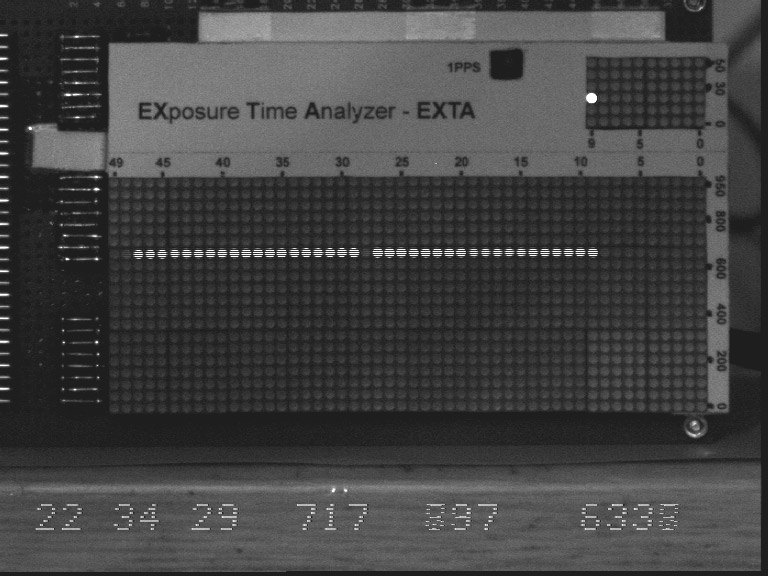
WAT-120N CCIR in mode OFF / Videograbber TIS DFG/USB2-lt
LED step time 1ms
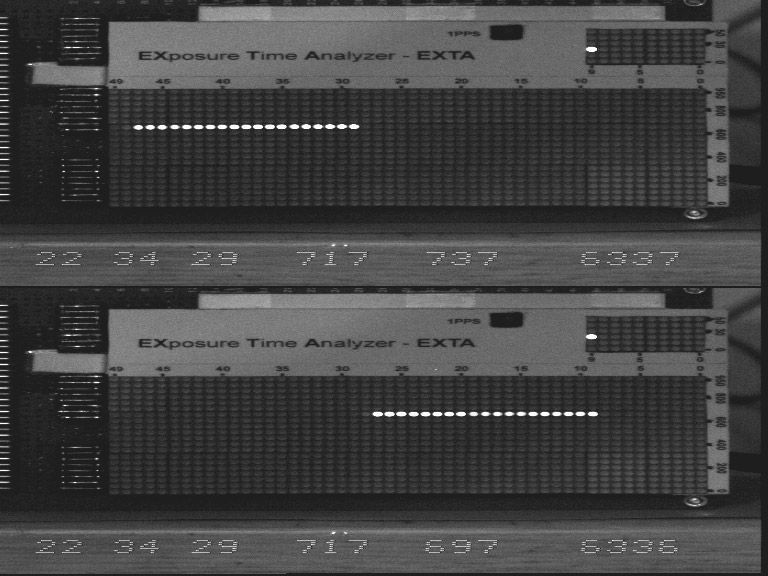
WAT-120N CCIR in mode OFF / Videograbber TIS DFG/USB2-lt
LED step time 1ms
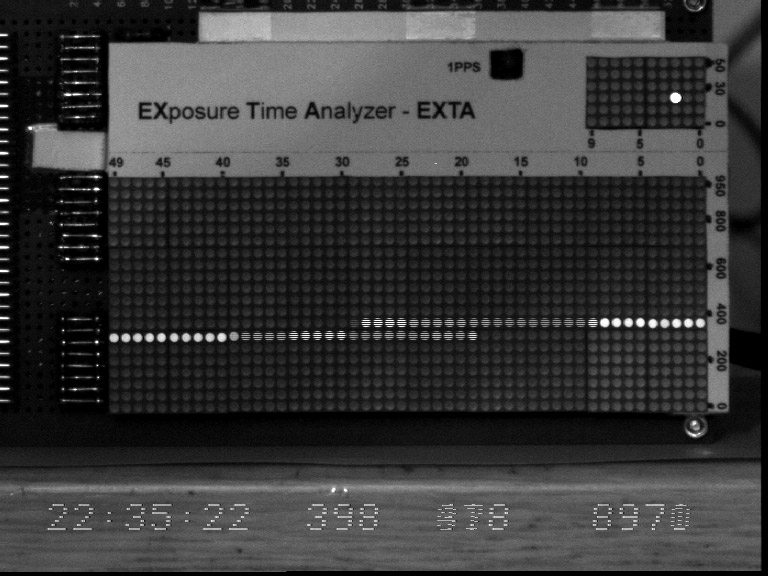
WAT-120N CCIR in mode 1 / Videograbber TIS DFG/USB2-lt
LED step time 1ms
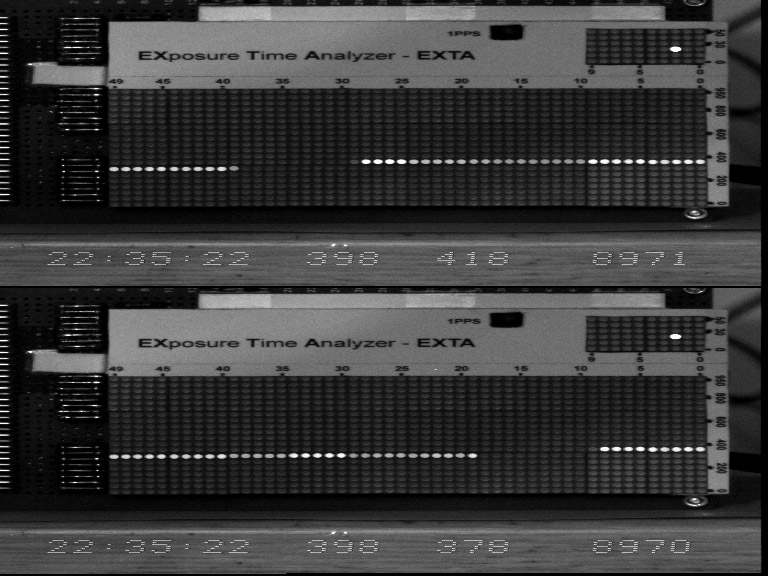
WAT-120N CCIR in mode 1 / Videograbber TIS DFG/USB2-lt
LED step time 1ms
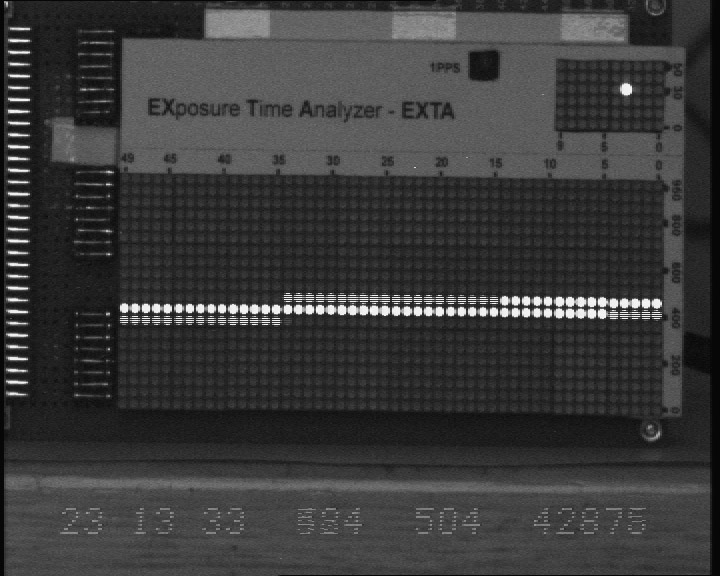
WAT-120N CCIR in mode 2 / Videograbber KWORLD
LED step time 1ms
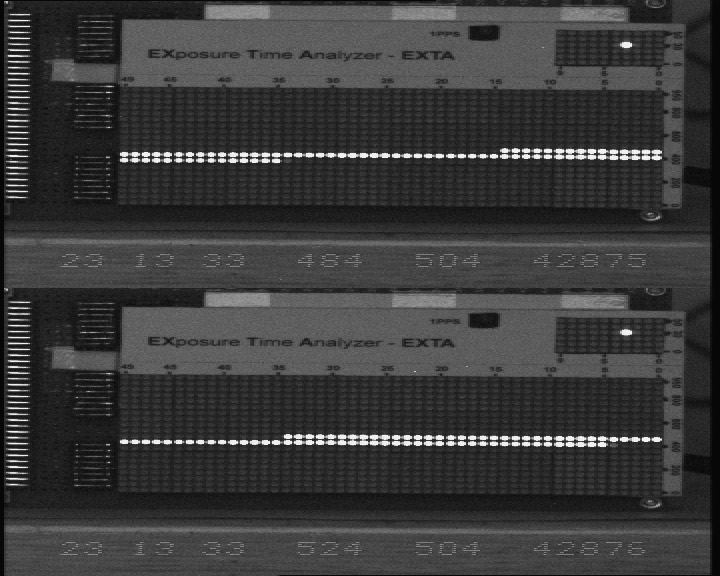
WAT-120N CCIR in mode 2 / Videograbber KWORLD
LED step time 1ms
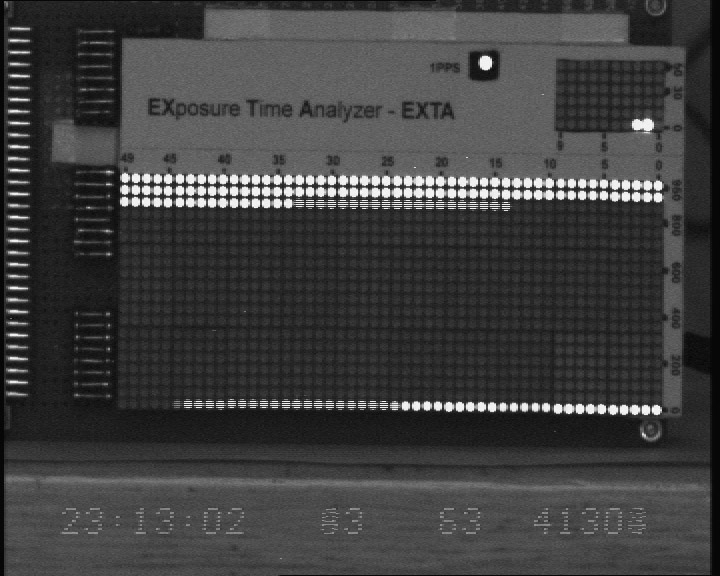
WAT-120N CCIR in mode 4 / Videograbber KWORLD
LED step time 1ms
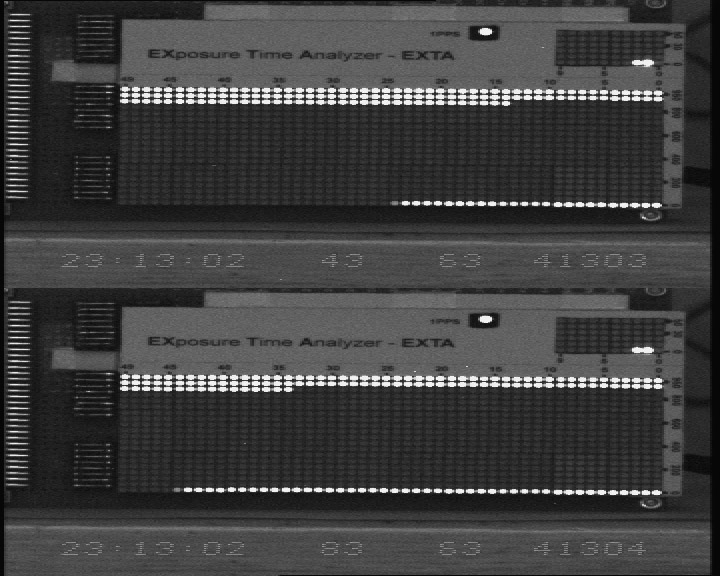
WAT-120N CCIR in mode 4 / Videograbber KWORLD
LED step time 1ms
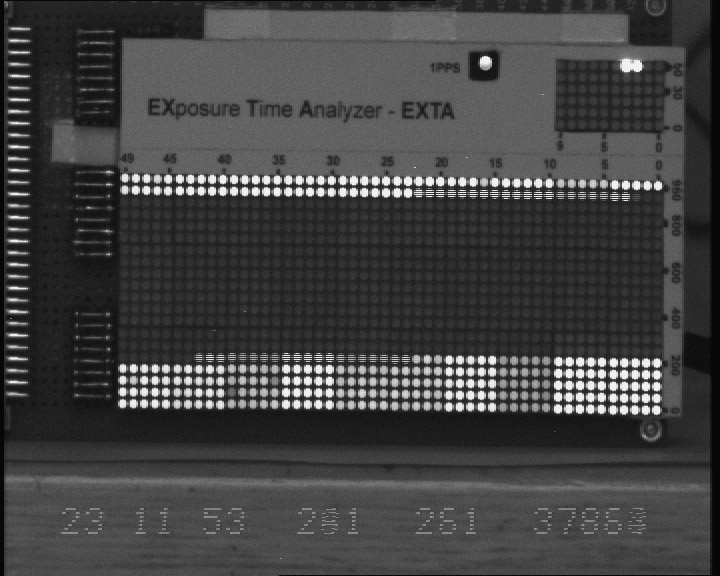
WAT-120N CCIR in mode 8 / Videograbber KWORLD
LED step time 1ms
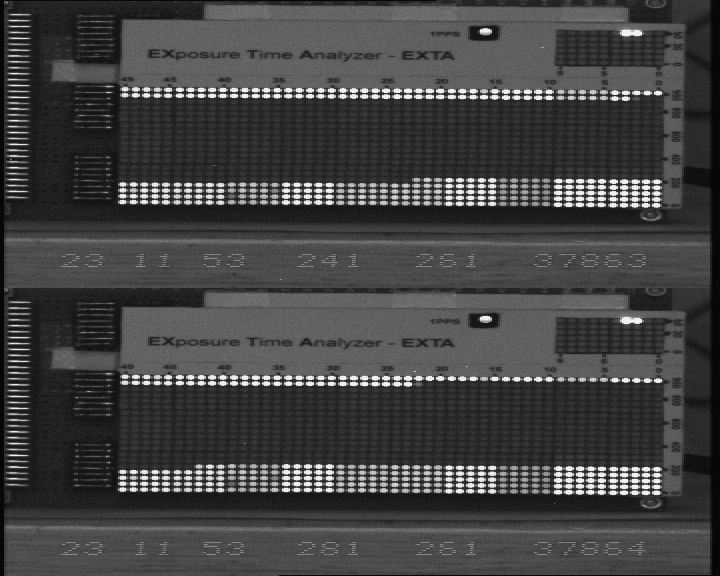
WAT-120N CCIR in mode 8 / Videograbber KWORLD
LED step time 1ms
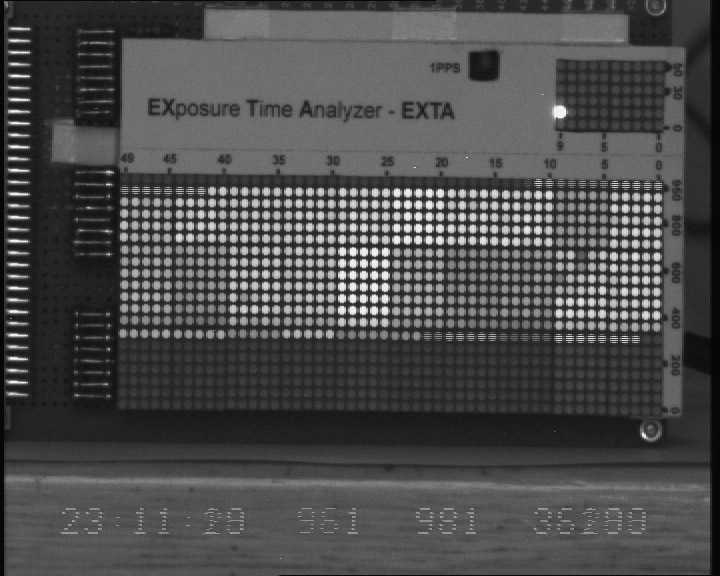
WAT-120N CCIR in mode 16 / Videograbber KWORLD
LED step time 1ms
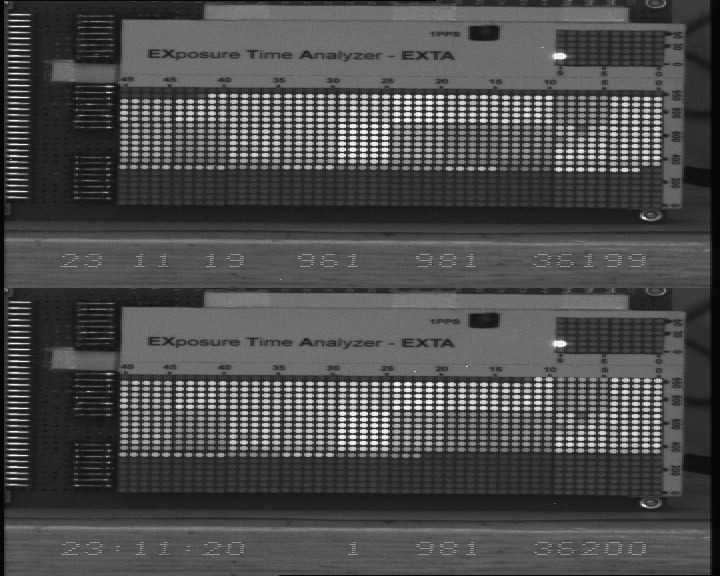
WAT-120N CCIR in mode 16 / Videograbber KWORLD
LED step time 1ms
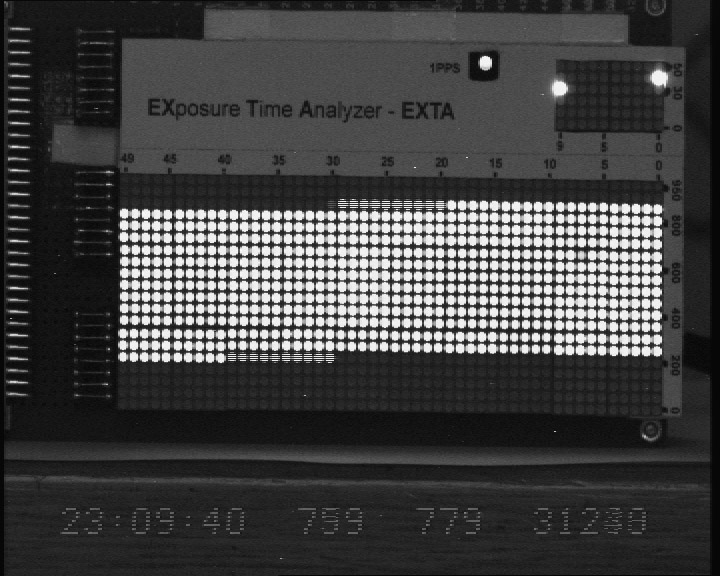
WAT-120N CCIR in mode 32 / Videograbber KWORLD
LED step time 2ms
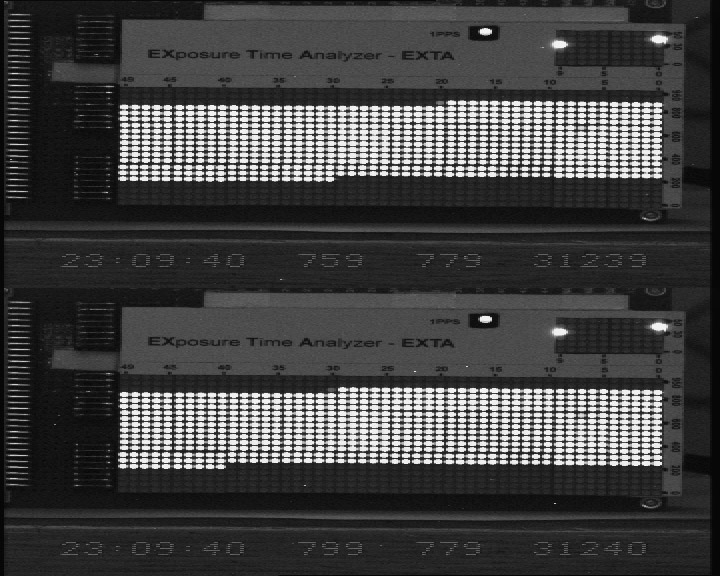
WAT-120N CCIR in mode 32 / Videograbber KWORLD
LED step time 2ms
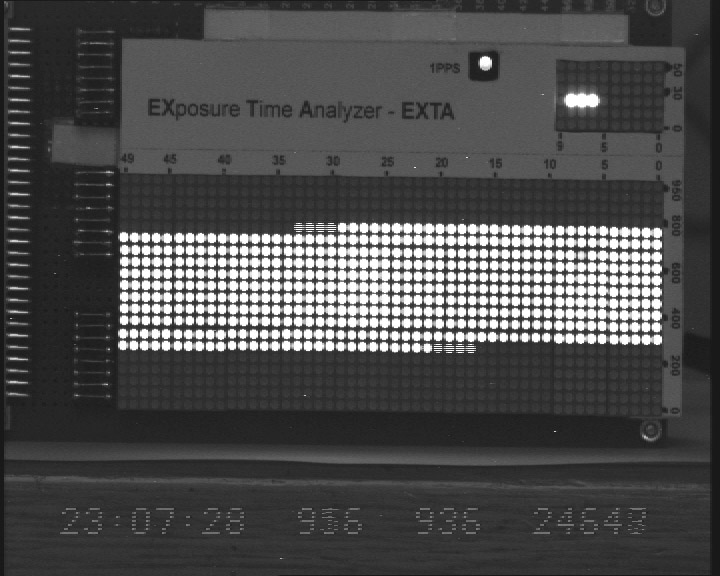
WAT-120N CCIR in mode 64 / Videograbber KWORLD
LED step time 5ms
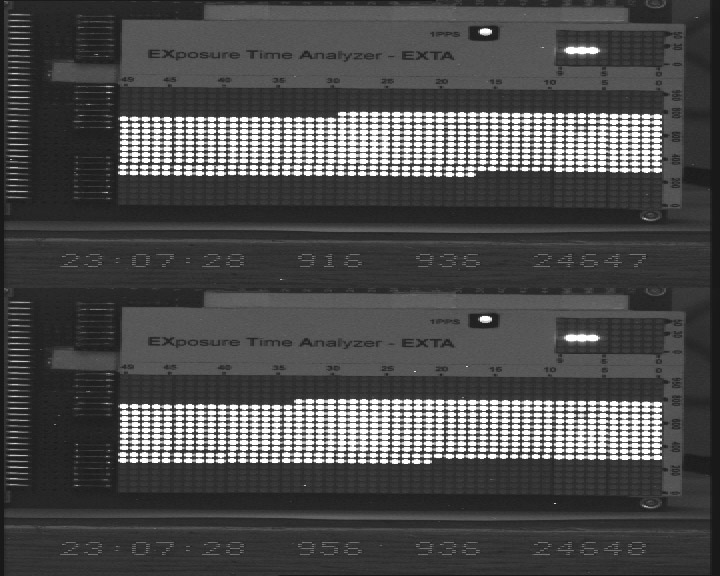
WAT-120N CCIR in mode 64 / Videograbber KWORLD
LED step time 5ms
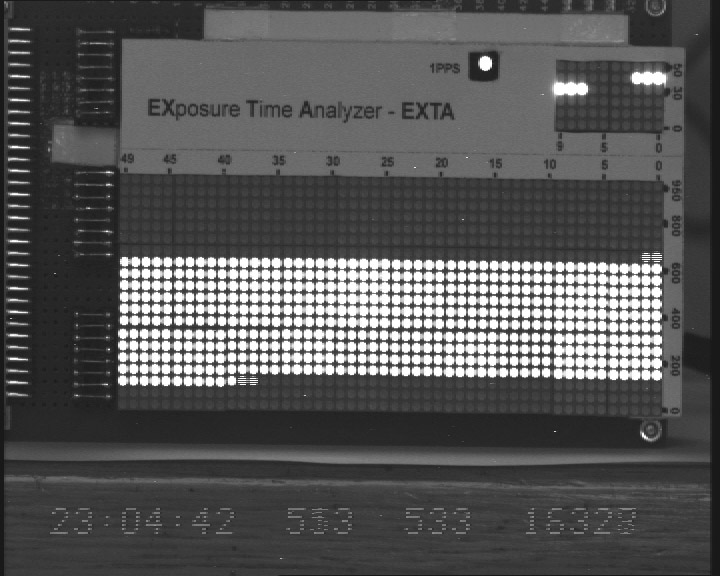
WAT-120N CCIR in mode 128 / Videograbber KWORLD
LED step time 10ms
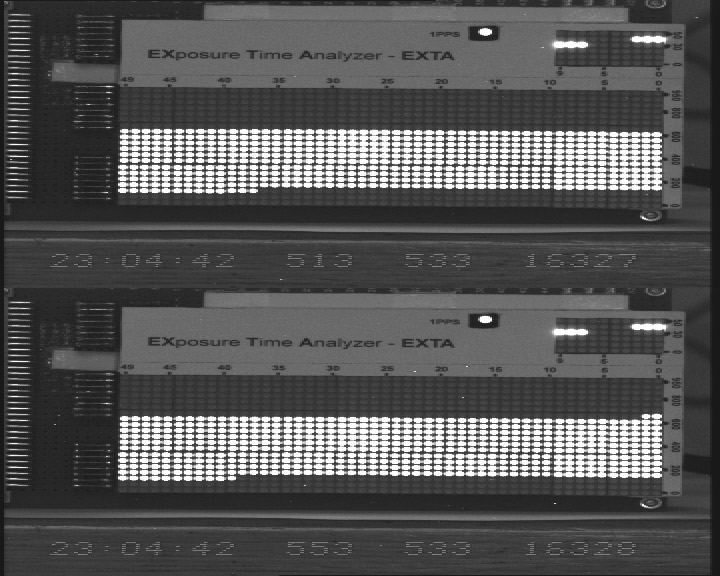
WAT-120N CCIR in mode 128 / Videograbber KWORLD
LED step time 10ms
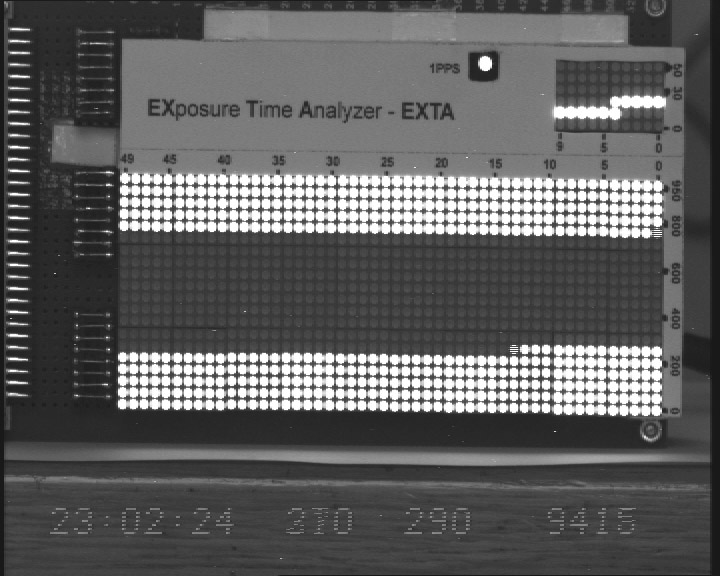
WAT-120N CCIR in mode 256 / Videograbber KWORLD
LED step time 20ms
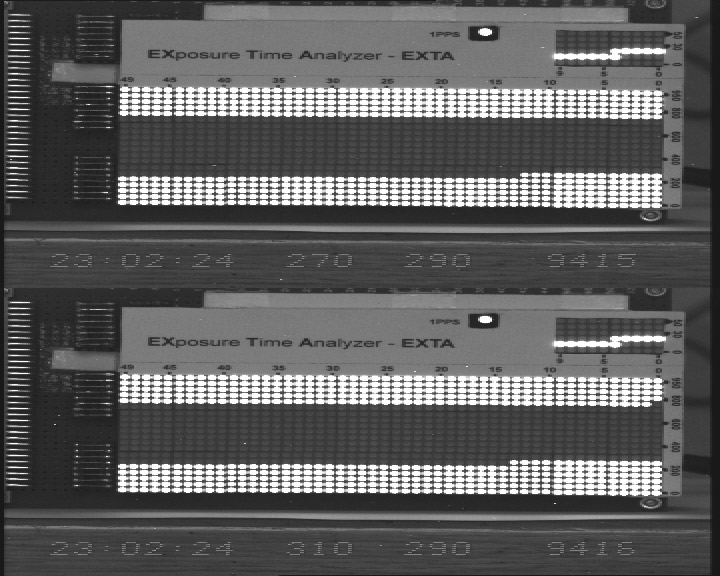
WAT-120N CCIR in mode 256 / Videograbber KWORLD
LED step time 20ms
Mode OFF Mode 1 Mode 2 Mode 4
Mode 8 Mode 16 Mode 32 Mode 64
Mode 128 Mode 256
Top of page
October 10, 2012 |
|
Site Home |